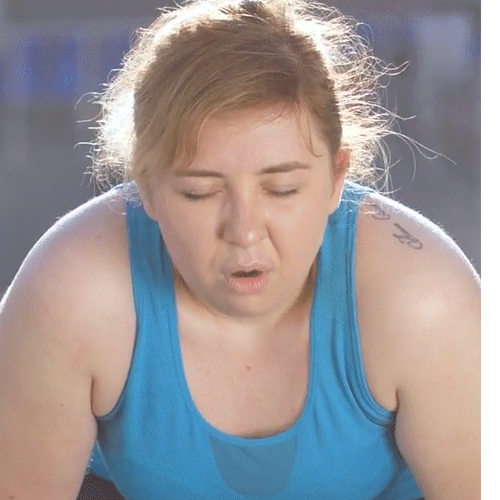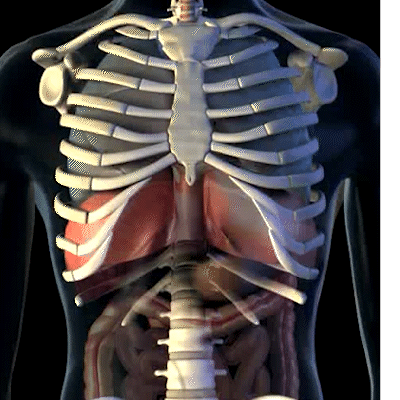How To Lose Weight By Breathing Properly
Nov 08, 2022
Does the idea of figuring out how to drop a few pounds leave you sighing in frustration? Let's give you a sigh of relief instead. When the number on the scale keeps creeping upwards, simply exhaling any unwanted calories sounds appealing.
It might not be that easy, but studies show that you can ramp up weight loss results with breathing exercises. It's no secret that breathwork is an effective way to manage stress and anxiety. Find out how you can also use it to squeeze back into your favorite jeans.
So how exactly are you lightening the load?
When you lose weight, where does it go exactly?
 It’s a good question to consider. Many people would think that when you ‘burn fat’ it turns into energy. But this isn’t actually what happens. In a paper published in the British Medical Journal, Researcher Ruben Meerman and professor Andrew J Brown explained: “Most people believed that fat is converted to energy or heat, which violates the law of conservation of mass. We suspect this misconception is caused by the "energy in/energy out" mantra and the focus on energy production in university biochemistry courses. Other misconceptions were that the metabolites of fat are excreted in the faeces or converted to muscle.”
It’s a good question to consider. Many people would think that when you ‘burn fat’ it turns into energy. But this isn’t actually what happens. In a paper published in the British Medical Journal, Researcher Ruben Meerman and professor Andrew J Brown explained: “Most people believed that fat is converted to energy or heat, which violates the law of conservation of mass. We suspect this misconception is caused by the "energy in/energy out" mantra and the focus on energy production in university biochemistry courses. Other misconceptions were that the metabolites of fat are excreted in the faeces or converted to muscle.”
So what happens to the fat that supposedly burns? We breathe it out! Meerman writes, "the lungs are the primary excretory organ for weight loss". So whether you are eating carbohydrates, fats or proteins, they all contain carbon atoms which ultimately get exhaled out as CO2.
This is why the exhaled air is heavier than the air you breathe in. Oxygen has two atoms, carbon dioxide has three. That is the weight, leaving your body.
Counting Calories is Counting Carbon Atoms
 Since our fat leaves through the breath, the main route to get thinner is to breathe out more carbon than what you breathe in.
Since our fat leaves through the breath, the main route to get thinner is to breathe out more carbon than what you breathe in.
So does this mean the faster you breathe, the thinner you get? Unfortunately we cannot simply hyperventilate our way to fitting into our jeans because that just depletes the store of CO2 in our body faster than it is being produced. But the research does say that slow, deep breathing exercises can help you to lighten the load of carbon more quickly.
How to Breathe to Lose Weight
In a world where weight-loss gimmicks run rampant, the idea of doing something you already do every day (breathing) to slim down might seem far-fetched. But several studies have linked breathing exercises to reducing body fat by:
-
Increasing metabolism
-
Decreasing hunger and appetite
-
Lowering stress and emotional eating
Keep in mind these are breathing exercises. Your regular inhaling and exhaling won't do the trick. Let’s see how this works.
Diaphragmatic Breathing Increases Metabolism
 Any basic breathing class will usually teach how to do ‘belly breathing’ because it works really well to help you calm down. But did you know that it also raises your metabolism?
Any basic breathing class will usually teach how to do ‘belly breathing’ because it works really well to help you calm down. But did you know that it also raises your metabolism?
The diaphragm is our primary breathing muscle attached inside of our rib cage. In many people, this muscle is under-utilized which creates all kinds of negative consequences on blood pressure and nervous system balance. Bringing the diaphragm to participate more fully in the breathing process is very healthy and as a study shows- it can raise the resting metabolic rate.
The resting metabolic rate is the number of calories your body uses while at rest, something which can be measured with a device which analyzes the breath to determine your oxygen consumption, the output of CO2 and the rate which you consume energy.
In this study they took 38 participants and divided them into two groups, the diaphragm breathing exercise group and a feedback breathing device group. The researchers found that after a few minutes of a diaphragmatic breathing practice there was a significant increase in resting metabolic rate but not in the control group.
Conclusion: Deep diaphragmatic breaths raises your resting metabolic rate and helps you burn through calories faster.
Practice: place your hands on your side body where one half of your hands are on your side ribs, the other half is on the flesh. As you breathe in, push the breath downwards. Feel both the ribs and the flesh expand at the same time so that your belly slightly expands on each inhale.
Control Your Breath, Control Your Appetite
If you ever grumbled your way through a strict diet while munching on celery sticks and wishing they were french fries, you could have benefited from breathwork. Breathwork has been shown to help balance hormones and that is great news because one hormone in particular can wreak havoc with hunger when it is out of whack: leptin. If the thought "I'm so hungry I could eat a horse" crosses your mind, your leptin is low.
Leptin is the hormone that regulates feelings of fullness. Specifically it tells your brain that you’re full and decreases your appetite. And certain breathing exercises increases leptin and through that, decreases appetite.
One study took 68 overweight and obese subjects to see what effects a daily practice of yoga and breathing versus a daily walking would have upon body mass index (BMI), belly fat and leptin. While both groups got their weight, belly circumference and cholesterol down, only the yoga and breathing group were able to get the leptin levels in the blood higher.
 Another study found that the sense of hunger can be consciously controlled. They took 60 volunteers with a high body mass index and taught them to hold their breath for 4 seconds while contracting their stomach muscles as one does in the yoga practice of ‘Uddiyana Bandha’. The group that did this exercise were able to significantly lower the subjective sense of hunger.
Another study found that the sense of hunger can be consciously controlled. They took 60 volunteers with a high body mass index and taught them to hold their breath for 4 seconds while contracting their stomach muscles as one does in the yoga practice of ‘Uddiyana Bandha’. The group that did this exercise were able to significantly lower the subjective sense of hunger.
And another study found that slow paced breathing significantly reduces hunger. The study tested a very helpful breathing practice known as Resonance Frequency Breathing, or breathing at 5-6 breaths per minute to determine how it may influence food cravings. The control group used a breathing pattern of 9 breaths per minute and it was found that the slower paced breathing reduced hunger and food cravings much more effectively.
Conclusion
Slow, deep diaphragmatic breathing and breath holds decrease appetite by increasing levels of the leptin hormone in the blood.
Practice
Learn and practice Resonance Frequency Breathing a simple practice of connected breathing at a rate of 5-6 breaths per minute which comes with many other important benefits for the health and wellbeing.
Less Stress, Better Eating
Finally as we all know already, breathing exercises can help us relax and reduce anxiety and that can help us make better decisions as it comes to food choices. When we reduce the stress hormone cortisol, we are less likely to fall into emotional eating habits which typically lead to poor choices about what to eat and how much to eat.
How to Get Started
There are numerous breathing techniques to choose from, but you don't want to get bogged down with too many choices or waste time with ones that won't get results. With the resonance frequency breathing approach, you will not only alleviate many problems that worsen weight gain. You will also begin a simple but highly effective method that you can stick with. This style uses 5-6 breaths per minute to create balance and harmony while cultivating a solid mind-body connection. Remember that you don't want to give up before the pounds start melting off, so choosing a powerful technique and learning how to do it correctly is essential.
Want to learn more? Try our Breathe to Heal course, which focuses on a gentle practice of resonance frequency breathing. It's the perfect place to start your conscious breathing practice.
Final Thoughts
Breathwork has long been recommended as an excellent way to relax and unwind. But the benefits go way further. Breathing can actually help you lose weight. Now you know that mindful breathing will help calm your mind and trim your physique.
Breath Energy Newsletter
The Breath Energy Newsletter comes out on the first Friday of every month. It includes a conscious breathing practice, a body-mind topic and announcements.
Enter your email and sign up for free right now
No Spam. Unsubscribe at any time.

